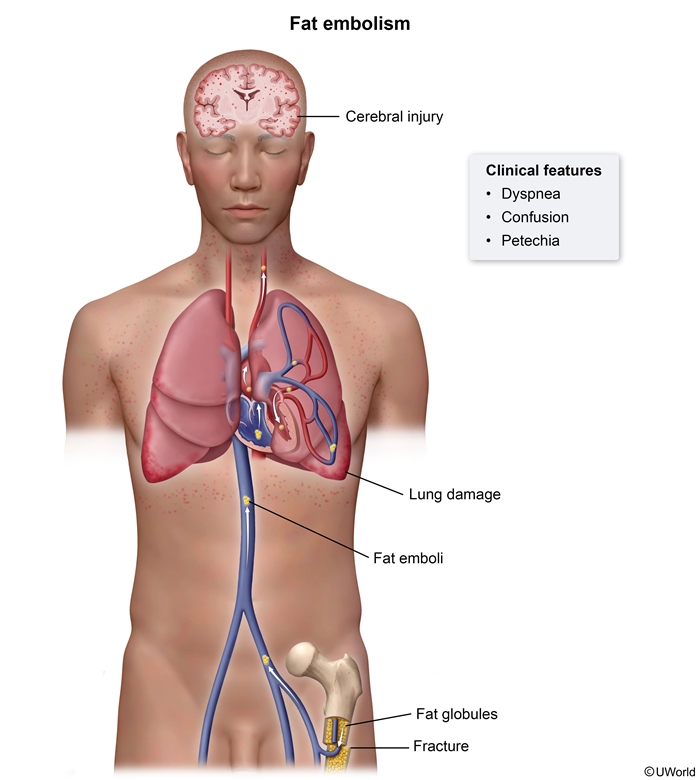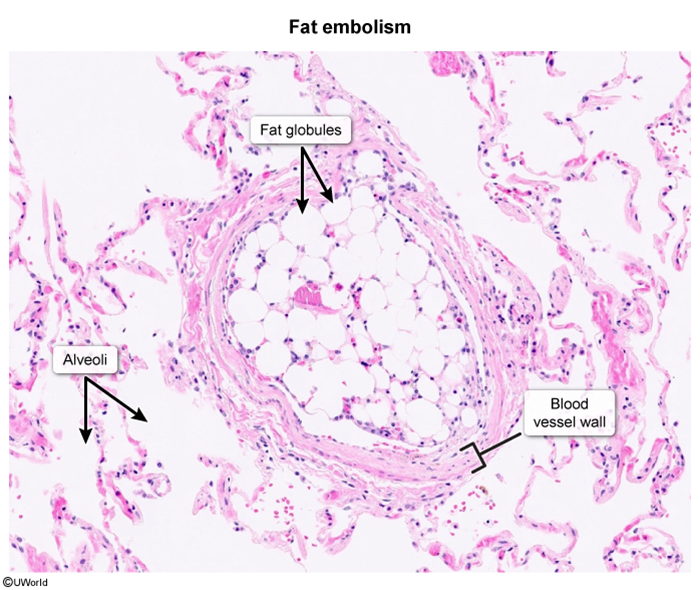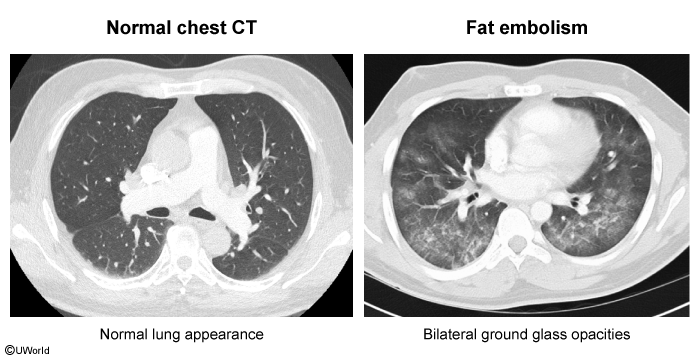Fat Embolism Syndrome
Article Sections
Introduction
Fat embolism syndrome (FES) occurs when an acute insult (eg, orthopedic trauma) introduces fat globules into the circulation, resulting in microvascular obstruction, endothelial injury, and inflammation. It produces the classic clinical triad of acute lung injury, neurologic dysfunction, and petechial rash. Although it is uncommon, FES is an important condition on the differential for multiorgan dysfunction in severely ill or injured patients.
Pathophysiology
FES involves release of fat globules into the bloodstream, where they occlude the pulmonary and systemic microvasculature and induce an inflammatory reaction. Specific etiologies include orthopedic trauma and adipose disruption.
Orthopedic trauma (most common)Bone marrow (especially femur and pelvis) contains high fat content that can be mobilized after fracture or surgery. The risk of FES is increased with multiple fractures, open or displaced fractures, and delayed time to surgical reduction.
Continue Learning with UWorld
Get the full Fat Embolism Syndrome article plus rich visuals, real-world cases, and in-depth insights from medical experts, all available through the UWorld Medical Library.
Figures

Images

